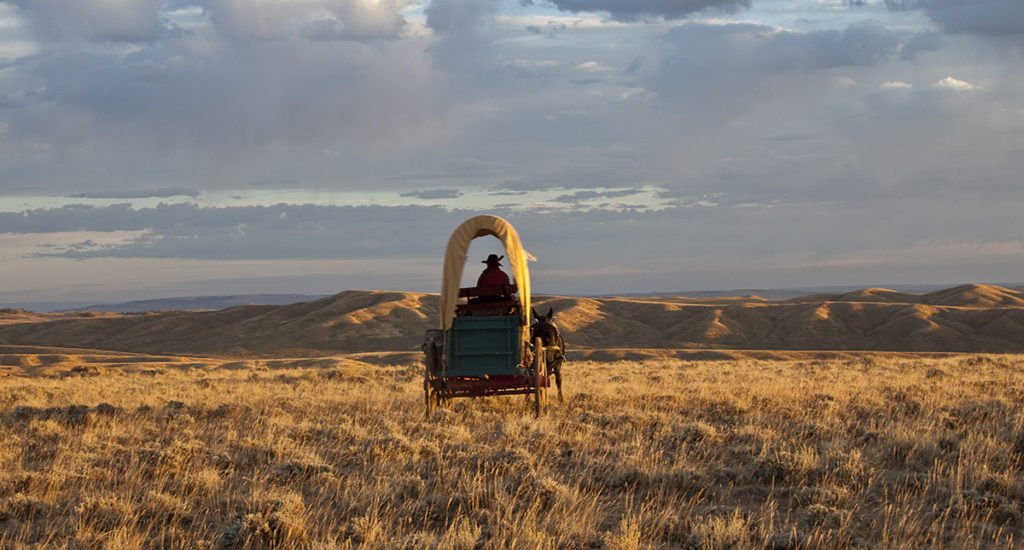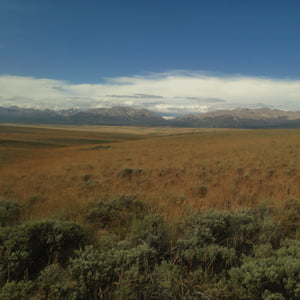“Ho for California!”
The West held the promise of opportunity and fortune. Thousands followed the California Trail across Wyoming between 1841 and 1869 in search of gold in a land where flowers bloomed all winter.
Quick Tips
Wind River Country's Historic Trails

Historic trails criss-cross Wind River Country, taking advantage of the easy access South Pass provides over the north-south barrier formed by the Rocky Mountains and the Continental Divide. Native Americans used this corridor for thousands of years before the arrival of Europeans, but it wasn’t until a party of fur trappers outfitted by John Jacob Astor and known as the Astorians “discovered” South Pass in 1812 that its importance to America’s western settlement became apparent.
Wyoming’s Wind River Country is also home to the Oregon Trail, Mormon Trail, and Pony Express route.
Explore the Trails and their landmarks on the Sweetwater Driving Tour.
My California Trail Experience
It’s hard for me to imagine the lure gold produced on people willing to give up everything they knew to brave the unknown and the rugged path that led to California.
It’s actually even harder for me to look out across the prairie of Wind River Country and imagine thousands of people making their way across it in wagons.

In the early 1840s there was barely a track worn through the sage brush taking people to California and hopefully riches. But in 1849 immigration to the West exploded and 25,000 people set out to find gold. All, but a few hundred were headed to California. In 1852 immigration peaked and 60,000 people headed west.
Now more than a century later this great migration West is etched across the landscape and some of the best segments of the trail that led people across the country are in Wind River Country.
The view sheds are unimpeded in many areas along the historic trail system so as you travel- by car, bike or foot, you can look out and see a horizon similar to what those traveling West witnessed.
If you head up to South Pass to check out the trail, I recommend also visiting South Pass City Historic Site and trying your hand at panning for gold. Finding a fleck or two might give you a little more insight into the gold fever that drove so many West.
There’s a lot of overlap of the historic trails that run through the area- the Mormon, Oregon, Pony Express and California Trail. There’s also a trail known as the Lander Trail, a modification to the California Trail that began in the South Pass area headed West to Fort Hall on the Snake River in what is now southeastern Idaho. This diversion of the California trail is about 229 miles long and called the Lander Trail. The Lander trail, according to Wyohistory.org, not only cut off miles to California, it also traversed spectacular landscapes with the Wind River Mountains as the backdrop. That backdrop remains unchanged as you venture out. Aside from the sense of the history, venturing out onto the historic trails gives a true taste of that wild Wyoming landscape.
National Historic Trails Museum
South Pass became the corridor of the Oregon, California, Mormon Pioneer, and Pony Express Trails. If you’re following one trail it’s easy to follow them all. Pick up National Historic Trails brochures at a local visitor center or the Bureau of Land Management.
Visitors Centers
Dubois Chamber of Commerce
708 Meckem St
Dubois, WY
Lander Chamber of Commerce
100 N. 1st
Lander, WY
Shoshoni Chamber of Commerce
216 Idaho
Shoshoni, WY
Sinks Canyon State Park Visitor Center
3018 Sinks Canyon Rd.
Lander, WY
US Forest Service Visitor Center
333 East Main
Lander, WY
US Forest Service Visitor Center
1403 W. Ramshorn
Dubois, WY
WYRiverton Chamber and Visitor Center
1075 S. Federal Blvd.
Riverton, WY